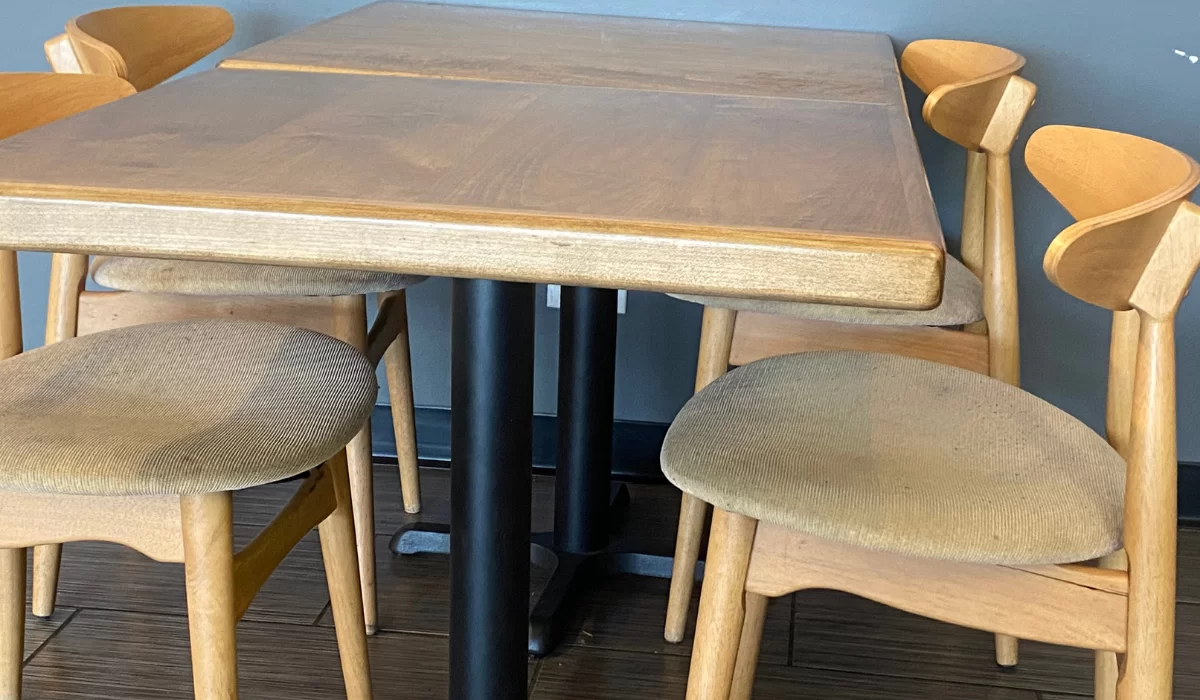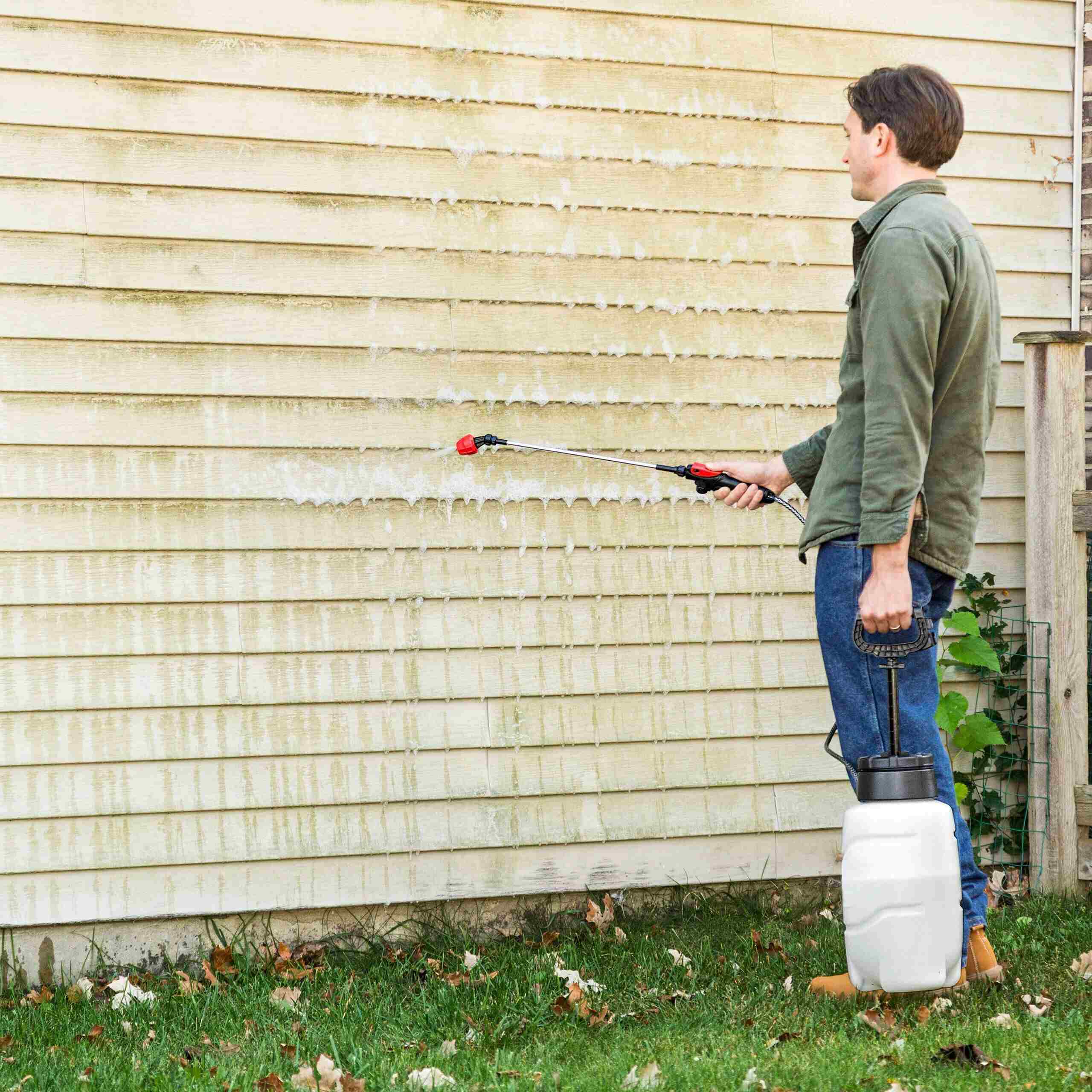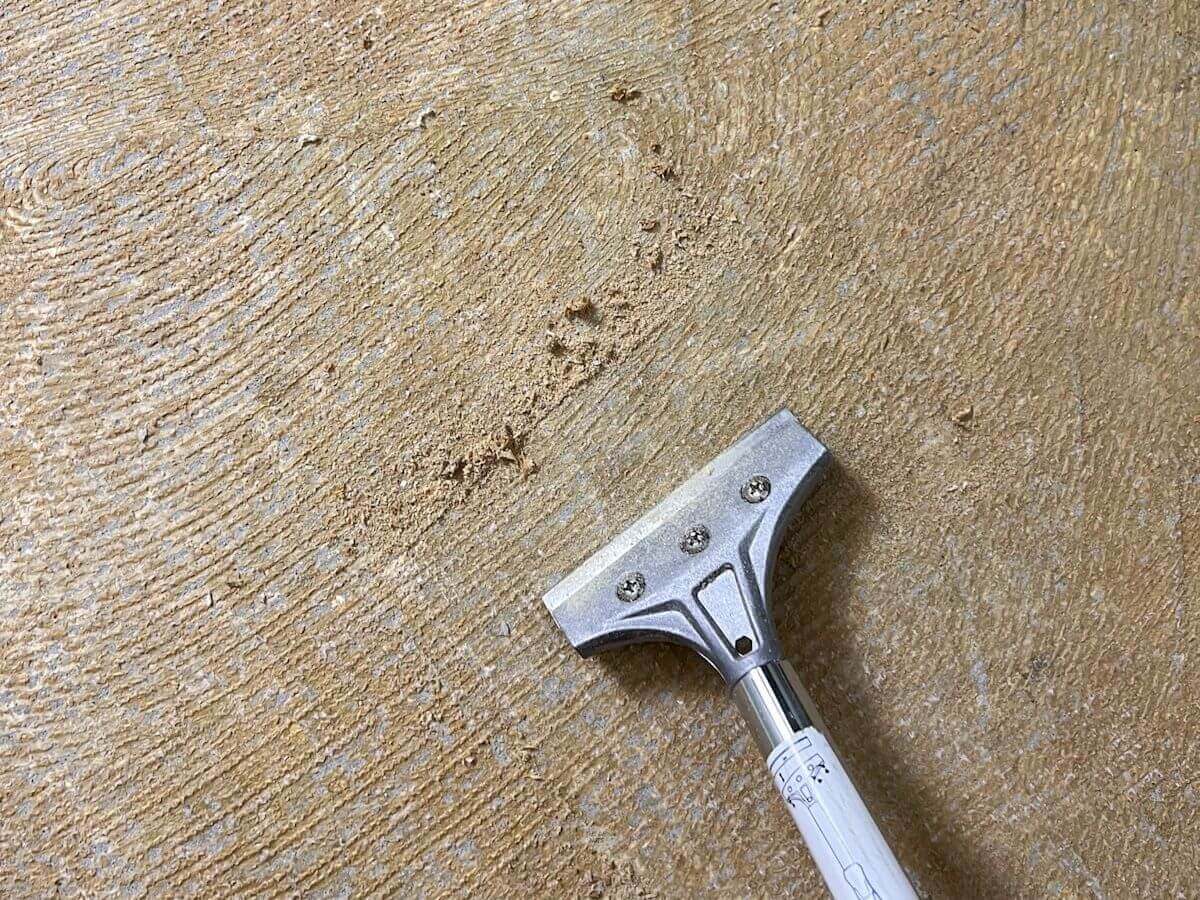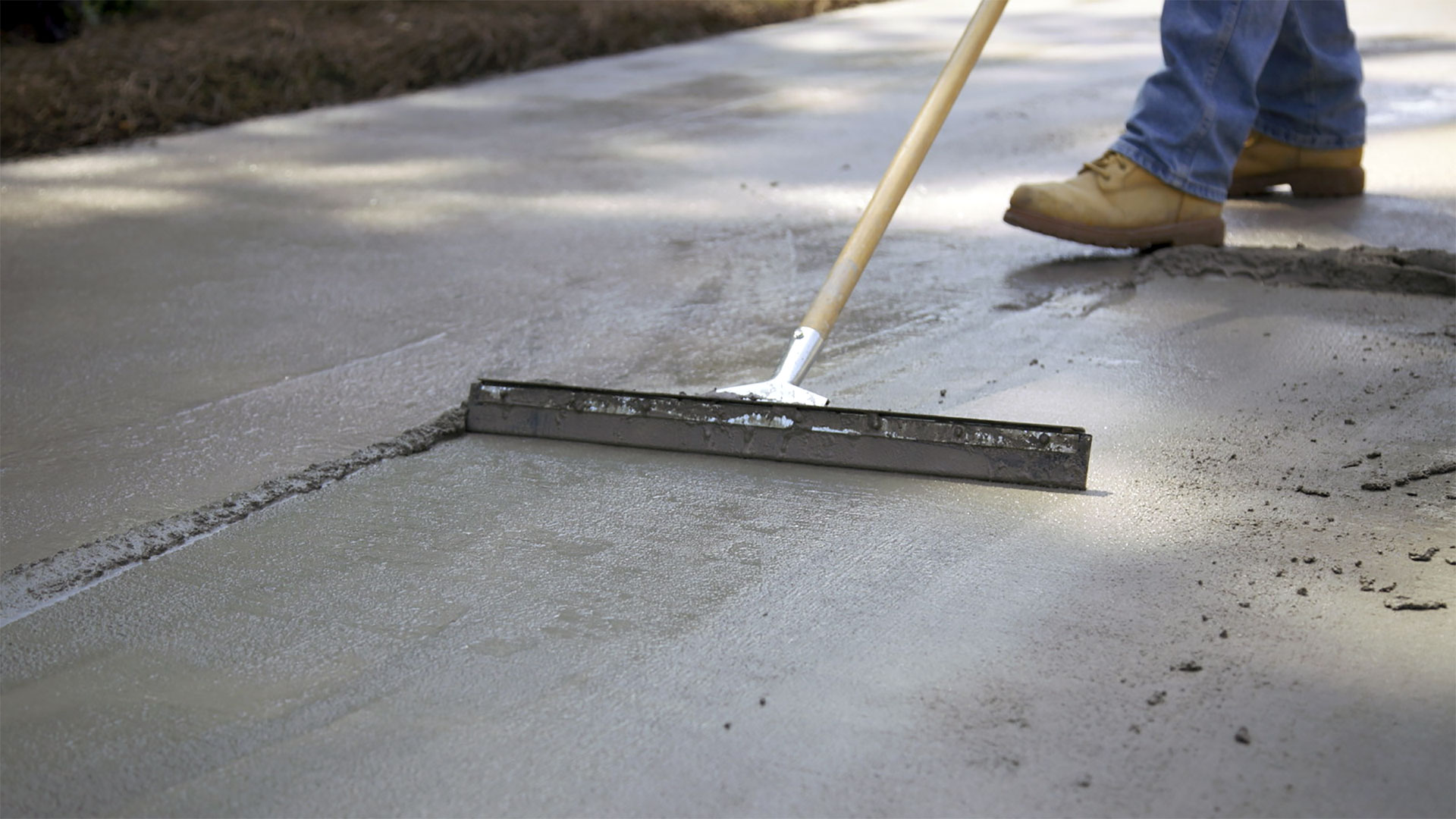

Articles
How To Remove Mildew From A Concrete Driveway
Modified: August 17, 2024
Learn the best techniques and products to clean driveway mildew in our informative articles. Say goodbye to unsightly stains and regain the beauty of your driveway.
(Many of the links in this article redirect to a specific reviewed product. Your purchase of these products through affiliate links helps to generate commission for Storables.com, at no extra cost. Learn more)
Introduction
Welcome to our comprehensive guide on how to clean driveway mildew. Over time, outdoor surfaces, including driveways, can develop unsightly mildew growth caused by moisture, lack of sunlight, and other environmental factors. If left untreated, mildew can not only diminish the appearance of your driveway but also pose a safety hazard due to its slippery nature. Therefore, it’s essential to take proactive measures to remove and prevent mildew buildup.
In this article, we will walk you through the process of effectively cleaning driveway mildew and provide you with valuable tips to maintain a clean and safe outdoor surface. Whether your driveway is made of concrete, asphalt, or pavers, our step-by-step guide will help you restore its original condition.
Before we delve into the specifics of cleaning driveway mildew, let’s first understand what mildew is and how it forms.
Key Takeaways:
- Effective driveway mildew removal involves preparation, proper cleaning techniques, and preventive measures. Regular maintenance, such as sweeping and power washing, is crucial to keep your driveway clean and free from mildew.
- Preventing future mildew growth requires promoting good airflow, maintaining proper drainage, and promptly addressing spills and cracks. By implementing these preventive methods, you can significantly reduce the risk of mildew reappearing on your driveway.
Read more: How To Remove Driveway Sealer From Concrete
Understanding Driveway Mildew
Mildew refers to a type of fungus that thrives in damp and humid environments. When it comes to driveways, mildew growth is commonly caused by factors such as constant shade, poor drainage, and lack of sunlight. This fungal growth not only affects the aesthetic appeal of your driveway but also poses a safety hazard due to its slippery nature.
It’s important to differentiate between mildew and mold. While both are types of fungi, mildew generally appears as a powdery or fluffy growth on the surface of materials, while mold tends to be thicker and fuzzy in texture. However, the process of cleaning mildew from driveways is similar to that of mold removal.
Driveway mildew commonly appears as black or green discoloration on the surface. These stains are caused by the accumulation of organic material, such as leaves, dirt, or oil, providing a fertile breeding ground for mildew. Additionally, the porous nature of concrete or asphalt driveways allows mildew spores to penetrate the surface and establish roots, making it more challenging to remove.
Now that we have a basic understanding of driveway mildew, let’s gather the tools and materials necessary for the cleaning process.
Tools and Materials Needed
Before you begin the process of cleaning driveway mildew, it’s important to gather the necessary tools and materials. Here is a list of items that will help you effectively remove mildew from your driveway:
- Pressure washer or garden hose
- Stiff-bristle brush or scrub brush
- Mildew cleaner or detergent
- Bleach or vinegar (optional)
- Protective gloves
- Protective eyewear
- Protective clothing
- Bucket
- Water
A pressure washer is the preferred tool for cleaning driveway mildew as it provides a strong stream of water to remove stubborn stains. However, if you don’t have access to a pressure washer, a garden hose equipped with a high-pressure nozzle can also be effective.
The stiff-bristle brush or scrub brush will help you agitate the mildew and loosen it from the surface of the driveway. Be sure to choose a brush with bristles that are firm enough to scrub away the mildew without damaging the driveway material.
When it comes to the cleaning solution, there are various options available. You can use a commercially available mildew cleaner specifically designed for outdoor surfaces, or you can create your own cleaning solution using a mixture of mild detergent and water. If the mildew stains are particularly stubborn, you may consider using bleach or vinegar. However, be cautious when using these substances as they can potentially damage certain types of driveways.
Lastly, it’s essential to protect yourself during the cleaning process. Wear protective gloves to protect your skin from the cleaning solution and mildew. Protective eyewear and clothing will also safeguard you from any potential splashes or spills.
Now that you have gathered all the necessary tools and materials, let’s move on to the next step: preparing to clean the driveway.
Preparing to Clean
Before you start cleaning driveway mildew, it’s important to take some time to prepare the area and ensure your safety. Here are some essential steps to follow:
- Clear the area: Remove any obstacles or debris from the driveway, such as cars, toys, or gardening equipment. This will provide you with a clear and unobstructed surface to work on.
- Pre-wet the driveway: Use a garden hose or pressure washer to thoroughly wet the surface of the driveway. This will help loosen the mildew and make it easier to clean off.
- Protect surrounding surfaces: If there are nearby plants, grass, or delicate surfaces, cover them with plastic sheets or tarps to protect them from the cleaning solution and any debris that may be dislodged during the cleaning process.
- Test the cleaning solution: Before applying the cleaning solution to the entire driveway, perform a small patch test on a less noticeable area to ensure it does not cause any damage or discoloration. This is especially important if you are using bleach or vinegar, as they can affect certain surfaces and vegetation.
- Read the manufacturer’s instructions: If you are using a commercially available mildew cleaner, be sure to read and follow the instructions provided by the manufacturer. Different products may have specific guidelines and precautions to ensure safe and effective use.
By taking these preparatory steps, you will be ready to tackle the task of removing mildew from your driveway effectively and safely. Now, let’s move on to the next section where we will explore the process of removing mildew from the driveway.
To clean driveway mildew, mix equal parts of water and white vinegar in a spray bottle. Spray the affected areas and let it sit for 10-15 minutes before scrubbing with a stiff brush. Rinse with water.
Removing Mildew from the Driveway
Now that you have prepared the area, it’s time to start removing the unsightly mildew from your driveway. Follow these steps to ensure a thorough and effective cleaning:
- Apply the cleaning solution: Depending on the type of cleaner you are using, follow the instructions on how to apply it to the mildew-affected areas. Typically, you will spray or pour the solution directly onto the stains.
- Let it sit: Allow the cleaning solution to penetrate the mildew for the recommended amount of time. This will help loosen the stains and make them easier to remove.
- Scrub the surface: Use a stiff-bristle brush or scrub brush to agitate the mildew and scrub it off the driveway surface. Apply firm pressure and scrub in a circular motion to effectively lift the stains. Pay extra attention to any stubborn areas that may require additional scrubbing.
- Rinse with water: Once you have scrubbed the entire area, rinse the driveway thoroughly with water using a pressure washer or garden hose. Make sure to remove all traces of the cleaning solution and loosened mildew.
- Inspect for remaining stains: After rinsing, check the driveway for any remaining mildew stains. If there are still stubborn spots, repeat the cleaning process or consider using a stronger cleaning solution. Avoid using excessive force or abrasive materials that could damage the surface of the driveway.
- Dry the driveway: Allow the driveway to air dry completely before using it again. This will prevent any slips or accidents caused by a wet surface.
It’s worth noting that some mildew stains may be particularly stubborn or deeply ingrained in the driveway. In such cases, you might consider seeking professional help or exploring alternative methods, such as applying a bleach or vinegar solution directly on the stains. However, be cautious when using these substances and always follow proper safety measures.
With the mildew successfully removed from your driveway, it’s time to take preventive measures to avoid future mildew growth. Continue reading to discover effective methods for preventing mildew on your driveway.
Read more: How To Remove Mildew From Outdoor Umbrella
Preventing Future Mildew Growth
Preventing future mildew growth is essential to maintain a clean and pristine driveway. Here are some effective methods to keep mildew at bay:
- Promote proper drainage: Ensure that water is effectively draining away from your driveway by fixing any drainage issues. Poor drainage can create a moist environment that encourages mildew growth. Consider installing drainage systems, such as trench drains or French drains, if necessary.
- Maintain good airflow: Trim overhanging trees or shrubs that are casting shade on your driveway. Allowing sunlight and good airflow to reach the surface will help prevent mildew growth.
- Regularly clean the driveway: Regular maintenance is key to prevent mildew buildup. Sweep or power wash your driveway regularly to remove dirt, leaves, and other organic materials that can provide a breeding ground for mildew.
- Treat with preventive measures: Apply a mildew-resistant sealant or coating specifically designed for driveways. This will create a protective barrier and inhibit the growth of mildew and other fungi.
- Keep gutters clean: Ensure that your gutters and downspouts are clean and free from debris. Clogged gutters can cause water to overflow onto the driveway, promoting moisture buildup and mildew growth.
- Avoid excessive watering: Be mindful of watering plants near the driveway. Excessive watering can lead to excessive moisture, making your driveway more susceptible to mildew growth.
- Address oil stains promptly: Oil stains can attract mildew and create an ideal environment for its growth. Clean up any oil stains on your driveway as soon as possible using a degreaser or a mixture of detergent and water.
By following these preventive measures, you can significantly reduce the risk of future mildew growth on your driveway. However, it’s important to note that no preventive method is foolproof, and regular maintenance is still necessary to keep your driveway clean and mildew-free.
Now that you know how to prevent future mildew growth, let’s move on to the final section of our guide: maintenance tips for a clean driveway.
Maintenance Tips for a Clean Driveway
Now that you have successfully cleaned your driveway and taken preventive measures against mildew growth, it’s essential to maintain its cleanliness in the long run. Here are some maintenance tips to help you keep your driveway looking clean and pristine:
- Sweep regularly: Regularly sweep your driveway to remove leaves, dirt, and other debris that can accumulate and create a favorable environment for mildew growth. A broom with stiff bristles will be effective in dislodging dirt from the surface.
- Power wash annually: Consider power washing your driveway at least once a year to remove any surface dirt, stains, or mildew spots that may have developed. This deep cleaning will help maintain the appearance of your driveway and keep it free from contaminants.
- Address spills promptly: If any spills occur on your driveway, such as oil, grease, or other substances, make sure to clean them up promptly to avoid staining and attracting mildew. Use a degreaser or a mixture of detergent and water to effectively remove the spills.
- Inspect and repair cracks: Regularly inspect your driveway for any cracks or damaged areas. Small cracks can provide a pathway for moisture and allow mildew to root and grow. Promptly repair any cracks using a driveway patching material to prevent further damage and potential mildew growth.
- Apply a fresh sealant: If you have a concrete driveway, consider applying a fresh coat of sealant every few years to protect the surface from moisture and prevent mildew growth. Follow the manufacturer’s instructions for the proper application process.
- Be cautious with de-icing products: During the winter months, be mindful of the de-icing products you use on your driveway. Some products may contain chemicals that can damage the surface or promote mildew growth. Use ice melt products that are safe for use on driveways and follow the recommended application guidelines.
- Maintain a clean surrounding area: Ensure that the surrounding area of your driveway, such as flower beds, grass, or hedges, is well-maintained. Overgrown vegetation can create shade and trap moisture, contributing to mildew growth on your driveway.
By following these maintenance tips, you can prolong the cleanliness and appearance of your driveway, minimizing the chances of mildew growth and the need for frequent deep cleaning.
Now that you have all the necessary knowledge to clean and maintain your driveway, it’s time to put it into action. With regular care and preventive measures, your driveway will remain clean, safe, and free from unsightly mildew.
We hope this guide has been helpful to you, and we wish you success in achieving a clean and well-maintained driveway!
Conclusion
Cleaning driveway mildew not only restores the appearance of your outdoor space but also helps maintain a safe and slip-free environment. By following the steps outlined in this guide, you can effectively remove mildew from your driveway and prevent its future growth.
Understanding the causes of driveway mildew and gathering the necessary tools and materials are crucial first steps. Preparing the area and taking safety precautions are essential for a successful cleaning process. By applying a cleaning solution, scrubbing the surface, and rinsing thoroughly, you can remove mildew stains and restore the beauty of your driveway.
Preventing future mildew growth is just as important as cleaning. Good drainage, proper airflow, regular maintenance, and the use of preventive measures such as sealants and coatings can help keep mildew at bay. By implementing these preventive methods, you can reduce the risk of mildew reappearing on your driveway.
Maintaining a clean driveway requires regular sweeping, power washing, and prompt handling of spills and cracks. By following these maintenance tips, you can ensure that your driveway remains in pristine condition and prevent mildew growth.
Remember, consistency is key when it comes to keeping your driveway clean and mildew-free. Regular maintenance and preventive measures will go a long way in preserving the durability and appearance of your driveway.
We hope that this comprehensive guide has provided you with valuable insights and practical steps to effectively clean and maintain your driveway. By implementing these tips, you can enjoy a clean, safe, and visually appealing driveway for years to come.
Thank you for reading, and we wish you success in your driveway cleaning endeavors!
Frequently Asked Questions about How To Remove Mildew From A Concrete Driveway
Was this page helpful?
At Storables.com, we guarantee accurate and reliable information. Our content, validated by Expert Board Contributors, is crafted following stringent Editorial Policies. We're committed to providing you with well-researched, expert-backed insights for all your informational needs.















0 thoughts on “How To Remove Mildew From A Concrete Driveway”